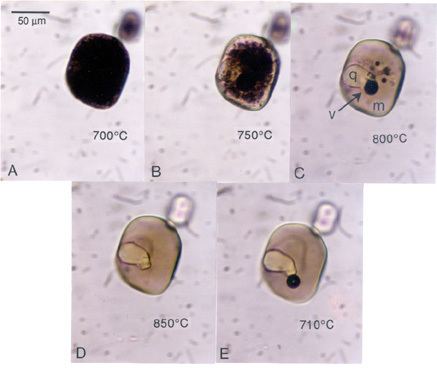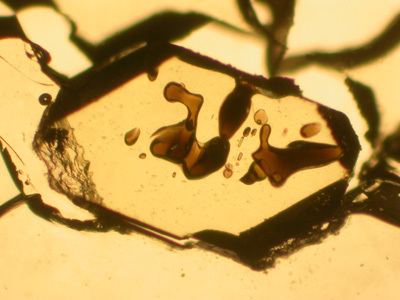 | ||
A melt inclusions pursuit into identity of carbonatite magmas and their economic potential
Melt inclusions are small parcels or "blobs" of melt(s) that are entrapped by crystals growing in the magmas and eventually forming igneous rocks. In many respects they are analogous to fluid inclusions. Melt inclusions are generally small - most are less than 80 micrometres across (a micrometre is one thousandth of a millimeter, or about 0.00004 inches). Nevertheless, they can provide an abundance of useful information. Using microscopic observations and a range of chemical microanalysis techniques geochemists and igneous petrologists can obtain a range of unique information from melt inclusions. The most common uses of melt inclusions is studying the composition and compositional evolution of magmas existed in the history of specific magma systems. This is because inclusions can act like "fossils" - trapping and preserving these melts before they are modified by later processes. In addition, because they are trapped at high pressures (P) and temperatures (T) many melt inclusions also provide important information about the entrapping conditions (P-T) and their volatile content (such as H2O, CO2, S and Cl) that drive explosive volcanic eruptions.
Contents
- A melt inclusions pursuit into identity of carbonatite magmas and their economic potential
- Sunset crater 03 melt inclusions
- References

Sorby (1858) was the first to document microscopic melt inclusions in crystals. The study of melt inclusions has been driven more recently by the development of sophisticated chemical analysis techniques. Scientists from the former Soviet Union lead the study of melt inclusions in the decades after World War II (Sobolev and Kostyuk, 1975), and developed methods for heating melt inclusions under a microscope, so changes could be directly observed.

Although they are small, melt inclusions may contain a number of different constituents, including glass (which represents melt that has been quenched by rapid cooling), small crystals and a separate vapour-rich bubble. They occur in the crystals that can be found in igneous rocks, such as for example quartz, feldspar, olivine, pyroxene, nepheline, magnetite, perovskite and apatite. Melt inclusions can be found in both volcanic and plutonic rocks. In addition, melt inclusions can contain immiscible (non-miscible) melt phases. Their study is an exceptional way to find direct evidences for presence of two or more melts at entrapment.

Sunset crater 03 melt inclusions

